A Journey Through Tradition, Flavor & Adventure
With special guest author: Christine, My Tuscany Roots
If you’re new here, welcome! I’m Rebecca, a cookbook author, recipe developer, and food photographer. You might know me from my recipe websites, Of Batter and Dough and A Little and A Lot.
My husband and I are nomads who divide our time between an RV and a sailboat (the boat is a new addition!), so I write about life on the road and on the water, the incredible places we visit, and the inspiring people we meet along the way.
For past issues of this newsletter, including all the recipes, check out the archive.
If you missed last week’s issue, which included recipes for Chorizo Quesadillas with Hot Honey, Fresh Corn Salad, and Grilled Apricots with Mascarpone Cream, you’ll find it here.
I have a special treat for you this week, a guest post from Christine, My Tuscany Roots! Christine is a cooking teacher, food writer, and passionate explorer of culinary traditions. More than that, she is an absolutely delightful human who radiates curiosity and care for the world around her and the people she meets along the way.
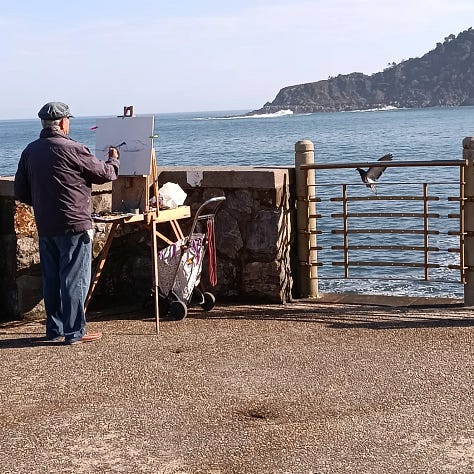
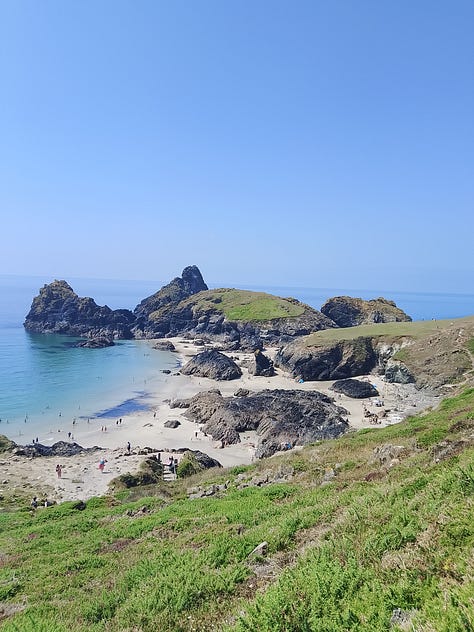
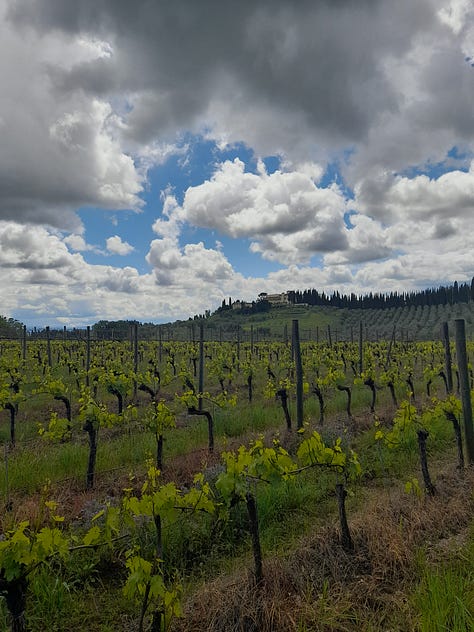
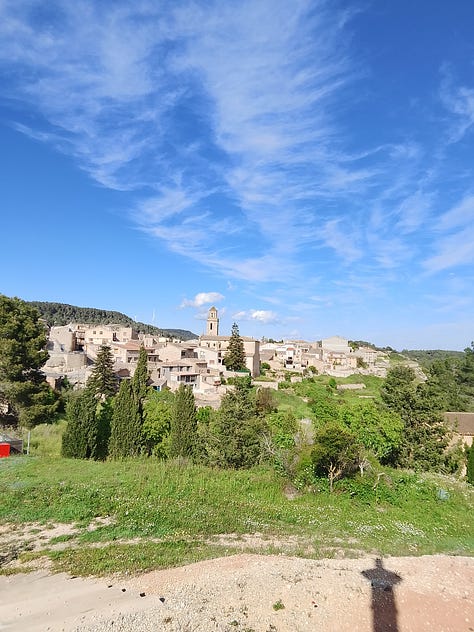
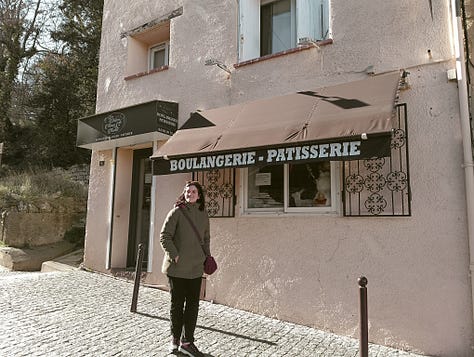


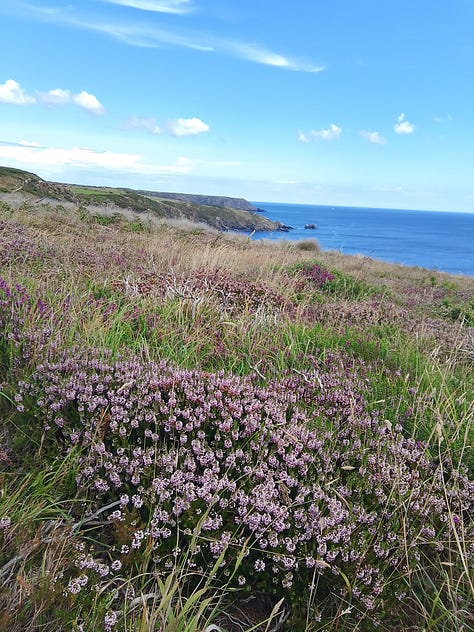
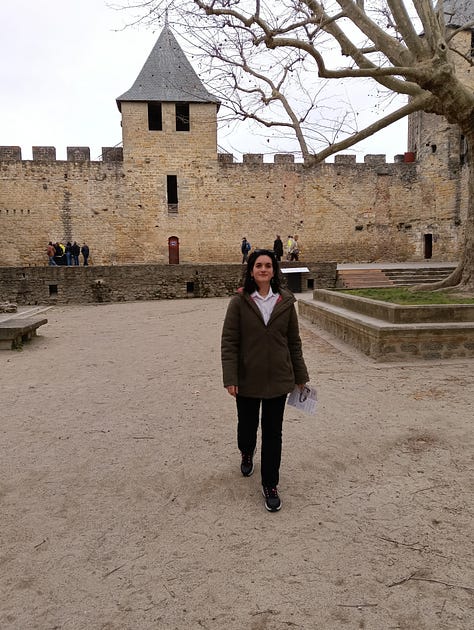
In this piece, Christine takes us all on a journey, from her Tuscan roots to her current adventure - a grand roadtrip across Europe in a camper.
I hope you enjoy this break from the normal Let’s Get Lost newsletter. One of my favorite quotes from the piece below, is this:
But as you know, life is always full of surprises. You never really know where it will take you, and sometimes you have to make decisions that will drastically change your path.
If you are as captured by Christine’s spirit of adventure as I was, here’s where you’ll find her delightful newsletter where she shares recipes and stories from her Tuscan roots and her travels across Europe.
Join Christine and I on Thursday, August 28 to make Tuscan Meatballs!
Tuscan Meatballs in Tomato Sauce: A Family Treasure
Meatballs are truly one of my favorite things in the world. As we are with things we love, I am quite picky about them. They must be juicy and flavorful, not tough or chewy, and in most cases, blanketed in a really good sauce.
A Journey Through Tradition, Flavor & Adventure
This project was born from both a longing and a necessity: a longing to preserve the culinary heritage of my homeland, and the necessity to tell its story through the eyes of someone who has lived it every day since childhood.
I wanted to share Tuscan cuisine as I know it, not as a glossy postcard version, but as an honest reflection of a life shaped by flour-dusted aprons, simmering pots, and meals where every bite carried the memory of the land. I am Cristina, born and raised in Montecerboli, a small village near Volterra, cradled in the rolling Tuscan hills.
My earliest memories are of our family garden, my small hands brushing against the leaves of tomato plants, pulling carrots from the earth still warm from the sun, and listening to my grandmother explain why each ingredient deserved respect. Seasons were not just dates on a calendar—they were the rhythm of our lives, dictating what we cooked, when we harvested, and how we gathered around the table.
These lessons shaped me more than I could have ever known, laying the foundation for my passion for cooking. From 2020 to 2024 , my work allowed me to share that passion with others. At Monterinaldi Winery in Chianti Classico, I taught the art of traditional Tuscan cooking and led wine tastings, pairing each dish with the perfect sip of Chianti.
Later, with Opera in the Kitchen in Florence, I created immersive culinary experiences where visitors didn’t just watch me cook—they cooked with me, tasted with me, and discovered the soul of Italian food culture, all of this listening to an Opera singer live in front of them. Every class, every shared meal confirmed what I had always known: food is a bridge between people, cultures, and generations.
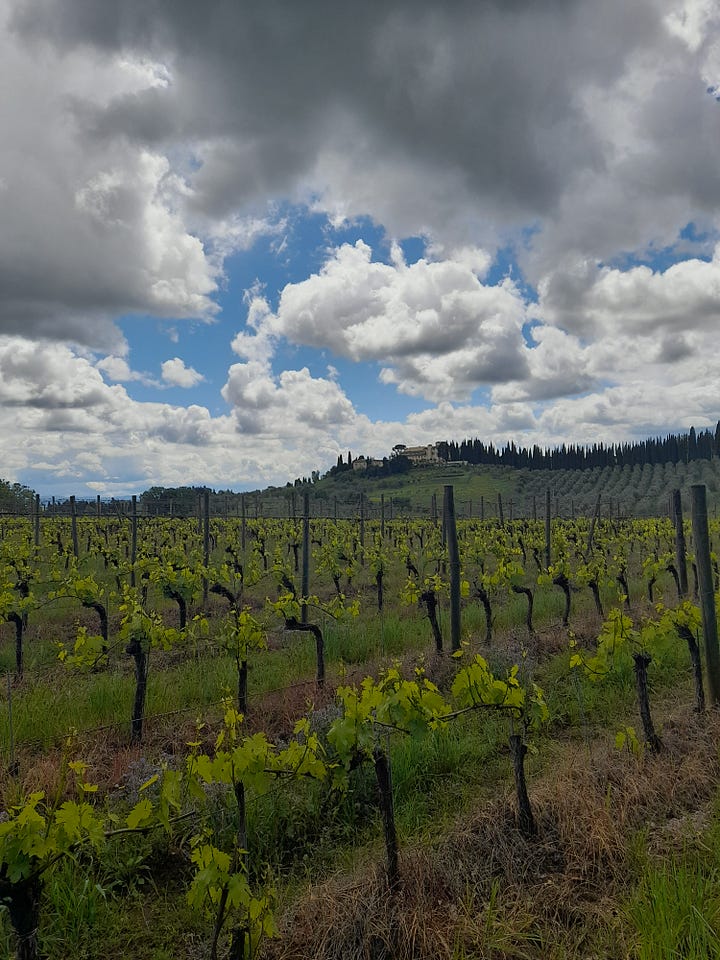
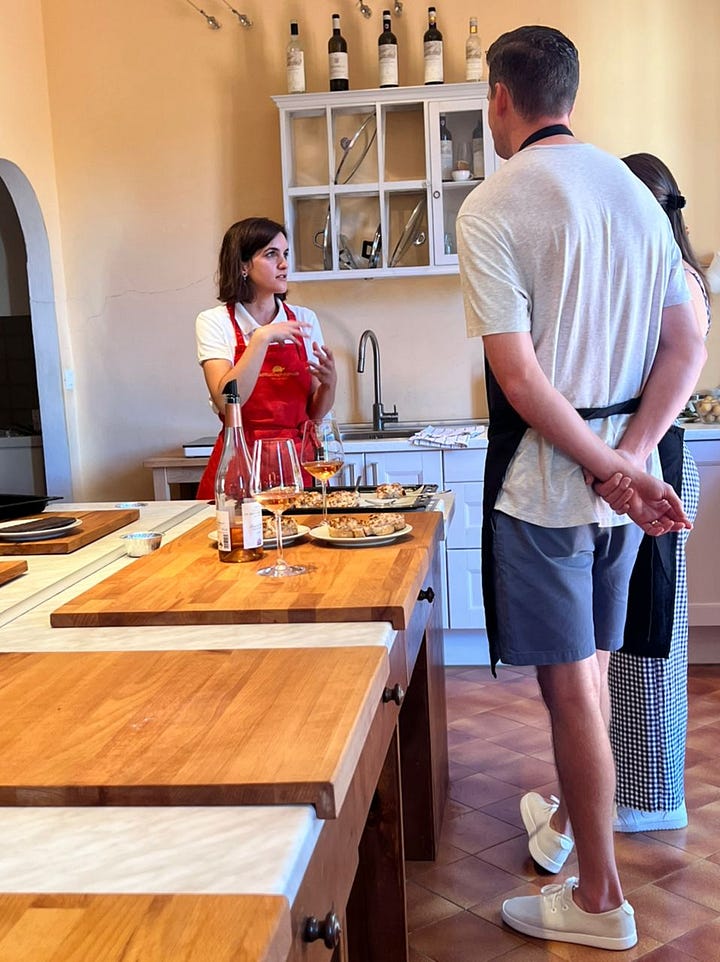
And yet, something inside me was stirring. I wanted to go deeper—not just to teach Tuscan cuisine, but to live it on the road, to collect the flavors of different places, to weave them into my story without ever losing sight of my roots. By the end of 2024, that feeling had grown into a calling. So, in January 2025, my partner and I made a leap of faith. We left our jobs, packed our essentials into our camper, and set off—not simply to travel, but to create new paths for our lives, guided by food, discovery, and connection.
From the very first miles, the road became both a teacher and a companion. Modena welcomed us with the scent of fresh tortellini and the soft golden glow of hand-rolled tagliatelle. Lake Maggiore reflected sunsets like liquid gold, while a simple pizza in Feriolo carried the comfort of home. In Alba, the air was perfumed with truffles, the hills whispered of wine, and in Les Adrets-de-l’Estérel, I found a stillness that reminded me that adventure is not only about movement—it’s also about pausing, breathing, and tasting life slowly.
Christine, My Tuscany Roots is my way of holding onto the heart of where I come from while opening my arms to the world. Here, I share the recipes my grandmother taught me, the dishes I discover along the way, and the stories that bind them together. Some will be rustic and centuries old, others born from new encounters and unfamiliar markets—but all will be tied to the belief that food is more than sustenance. It is memory. It is love. It is the language through which I understand the world.
This journey is still young, but already it has taught me that following a passion can be both the most daunting and the most rewarding thing you ever do. I hope that, as you read, cook, and travel alongside me, you feel the warmth of my kitchen, the excitement of the open road, and the timeless joy of gathering around a shared table.
The First Miles: January to March Where the Road Meets the Table
When I set out on this journey in January, I knew it would be more than a road trip. It was a promise to myself—to travel through Europe not only with my eyes wide open, but with my heart and palate ready to embrace every flavor, every tradition, every story the road had to offer. My camper became both my home and my traveling kitchen, carrying me from the familiar hills of Tuscany into a world where each stop was a chapter, each meal a memory in the making.
It began in Modena, a city that feels like an ode to Italian culinary heritage. Wandering its streets, I could almost hear my grandmother’s voice guiding my hands as I remembered her meticulous way of making pasta. In Modena, tortellini are treasures—tiny, perfect parcels of flavor served in rich broth or cream. Tagliatelle here are golden ribbons, elastic and silky, destined for the embrace of a slow-simmered ragù. Every bite reminded me why preserving these artisanal techniques matters—not as nostalgia, but as living traditions passed from one generation to the next.
From the heart of Emilia-Romagna, the road led me north to the tranquil beauty of Lake Maggiore. Verbania welcomed me first, its pace unhurried, its air fresh with the scent of water and pine. Nearby Stresa and Arona offered breathtaking views—places where time seems to pause just long enough for you to breathe in the moment. But it was in the small village of Feriolo that I felt something special. As the sun sank low, painting the lake in shimmering gold, I walked along its quiet shore, listening to the soft murmur of the breeze. That evening, at Fiore di Latte, I shared a simple yet perfect pizza—its crust blistered from the wood-fired oven, its flavors as warm and familiar as an embrace.
The next morning, the road called again, leading me through Piedmont to Alba. Famous for its wines and the intoxicating aroma of truffles, Alba is not just a place—it’s an experience that lingers in the senses. I wandered its cobbled streets under the golden light of dusk, feeling both the richness of the land and the calm that comes from being fully present. My stay was short, but the taste of Alba—earthy, deep, and unforgettable—traveled with me.
Then came the French border, and with it, the dazzling promise of the Côte d’Azur. The journey through the Estérel Mountains felt like stepping into a painting—their red cliffs glowing in the light of the setting sun, the turquoise sea unfolding beyond each bend in the road. Every kilometer felt like a soft whisper of promise, a quiet thrill of the unknown.
By February 22, I had reached Les Adrets-de-l’Estérel, a place where the forest meets the Mediterranean in a perfect embrace. Nestled between the green slopes and the sparkling bay of Cannes, the village offers sweeping views of the Lérins Islands, framed by the rugged silhouette of the Esterel mountains. Here, mornings began with light spilling over the hills, afternoons were filled with the gentle hum of village life, and evenings brought a stillness that settled deep within me.
As I sat in that quiet beauty, I realized that the magic of travel isn’t only in the places we visit—it’s in the connections we make, the flavors we taste, and the peace we allow ourselves to feel.
It’s in sharing a smile with someone who was a stranger just moments before, in savoring a dish that carries centuries of tradition, in pausing long enough to watch the light change over a landscape.
These first months have been a journey of the senses—a feast of handmade pasta, golden sunsets, truffle-scented air, and sea views that take your breath away. They have taught me that the road is not just a path from one place to another; it is a way of tasting life itself. And as winter turns gently toward spring, I carry forward the gratitude, wonder, and flavors that have already shaped the story of this adventure.
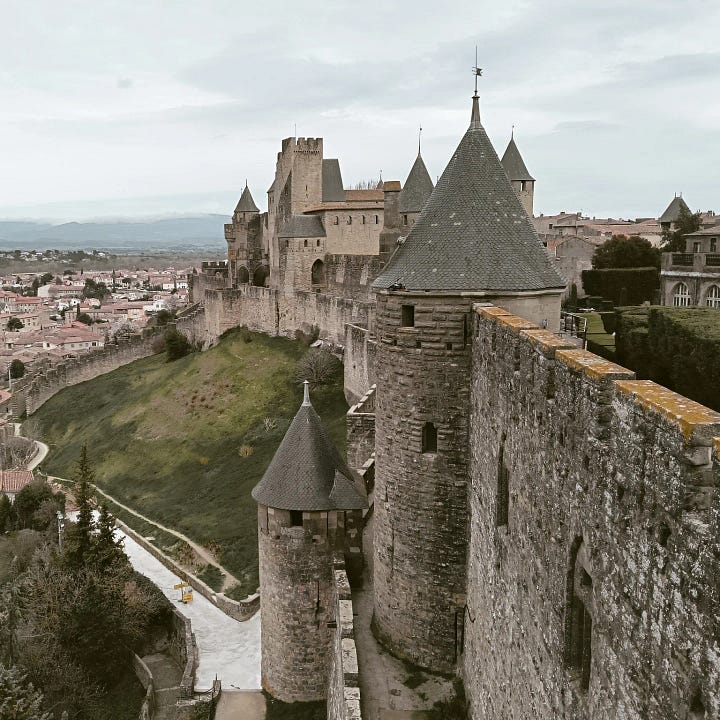
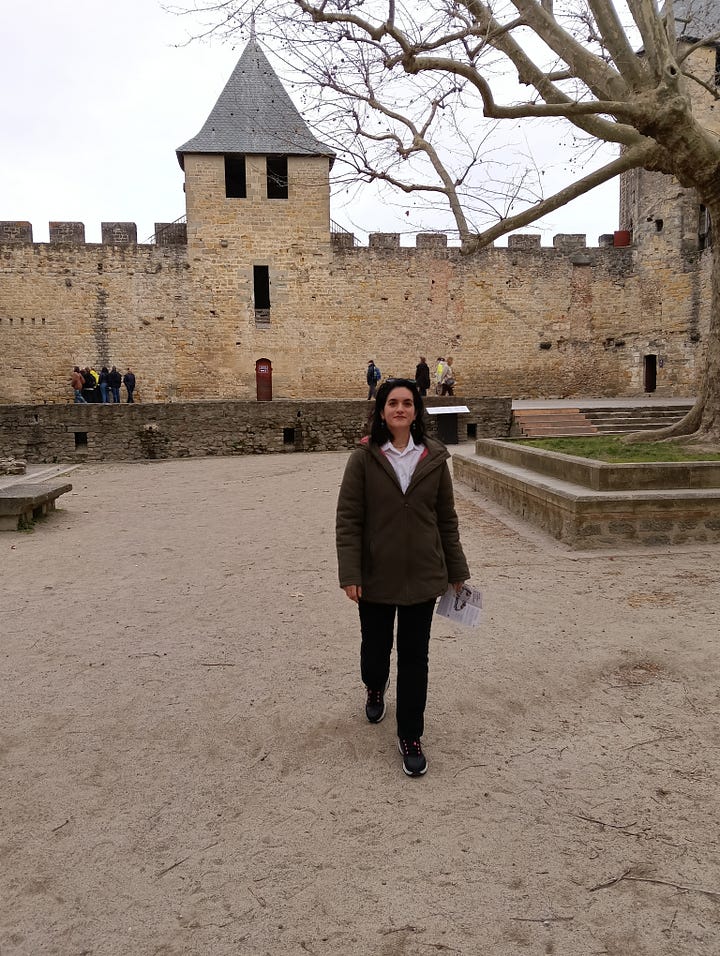
From Carcassonne to Cantabria: Spain in a Thousand Flavors
After leaving behind the medieval magic of Carcassonne, our intention was clear: to explore Spain in all its vastness, to follow its winding roads through landscapes as varied as its traditions, and to taste our way through a thousand flavors. Spain is a country of contrasts—mountains and coastlines, modern cities and timeless villages, fiery spices and delicate sweets—and we could hardly wait to begin uncovering its secrets.
Our first stop was San Sebastián, a jewel of the Basque Country where the Atlantic rolls gently against golden shores. We stayed for three days, giving ourselves time to absorb its rhythms and charms. From the moment we arrived, the city wrapped us in its embrace—the salty breeze on our faces, the rhythmic murmur of the tides, the way the green hills seemed to lean toward the sea as if to listen to its whispers.
La Concha Beach curved before us like a painter’s brushstroke, its soft sand warm beneath our feet, the water shifting from deep sapphire to shimmering gold as clouds passed overhead. Along the promenade, elegant balustrades and vintage lampposts invited slow strolls, each step revealing a new angle of the bay.
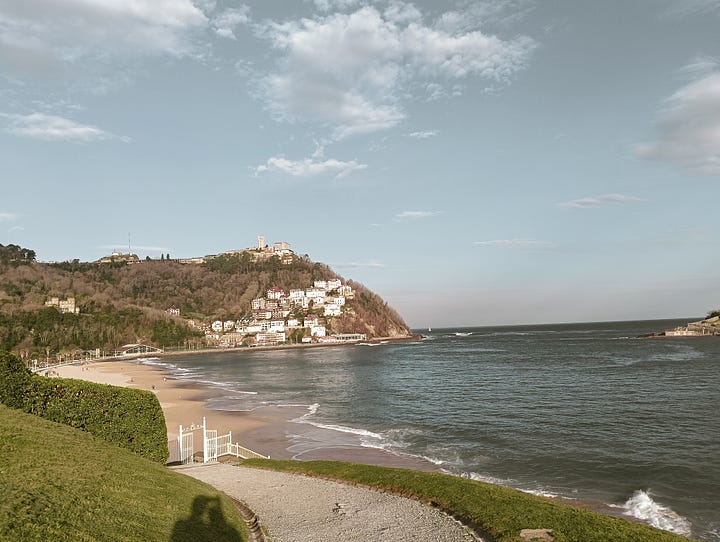
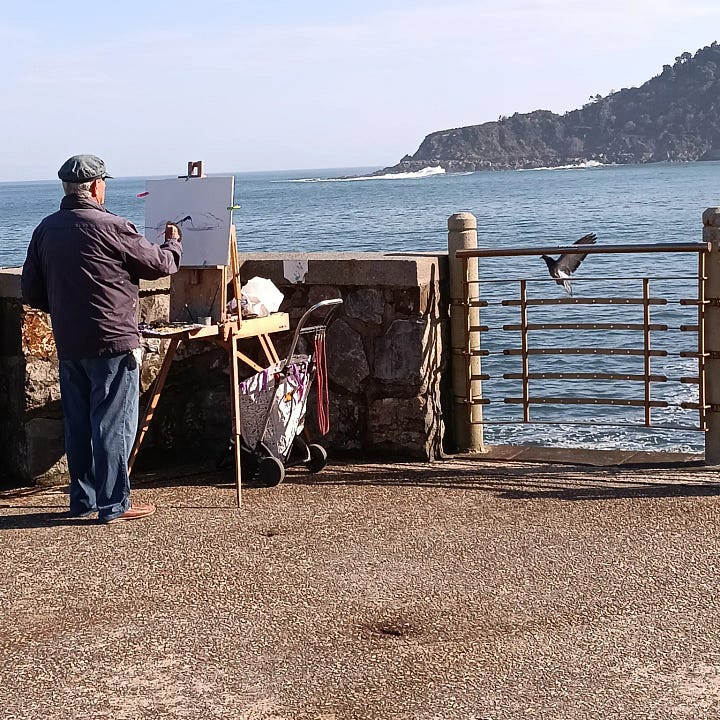
The heart of San Sebastián beats strongest in its Old Town, where cobbled streets pulse with laughter, clinking glasses, and the irresistible aroma of pintxos—those bite-sized marvels that are as beautiful as they are delicious. Anchovies glistening in olive oil, creamy croquetas, morsels of seafood kissed with smoky paprika… and then the Basque Tarta at La Viña. With its caramelized top giving way to an impossibly creamy heart, it was more than dessert—it was pure indulgence, a taste of tradition that lingered long after the last bite.
By late February, the road carried us west into Cantabria, “Green Spain,” where rolling hills meet the sea in an embrace of endless shades of green. We settled in the medieval village of Santillana del Mar for a full week, wanting to explore it without hurry. Its stone houses, draped in flowers, stood silent and timeless, each narrow lane whispering stories from centuries past.
From here, we visited the Altamira Museum, built beside the world-famous cave whose prehistoric murals are among humanity’s greatest treasures. The permanent exhibition, The Times of Altamira, transported us deep into the Iberian Peninsula’s prehistory, revealing how its people lived, hunted, created art, and shaped tools between 35,000 and 13,000 years ago.
The highlight was the Neocueva—a meticulously crafted replica of the original cave, its delicate paintings preserved from human wear. Walking through it felt like stepping back into an ancient world, where the flicker of firelight once danced across ochre and charcoal figures, and art was not a luxury but a necessity of the human spirit.
And of course, Santillana had another treasure waiting for us—Casa Quevedo. This family-run bakery, crafting traditional Cantabrian pastries since 1930, was a revelation. Inside, the air was thick with the scent of warm milk, butter, and sponge cake. We began with bizcochos, light and airy sponge cakes that melted on the tongue.
Then came sobao pasiego, rich and buttery with just a hint of lemon zest, and finally the quesada pasiega, a dense, creamy dessert infused with cinnamon and the soul of Cantabria’s dairy tradition. Each bite was more than delicious—it was a bridge to the past, a taste of the land and the people who have shaped it for generations.
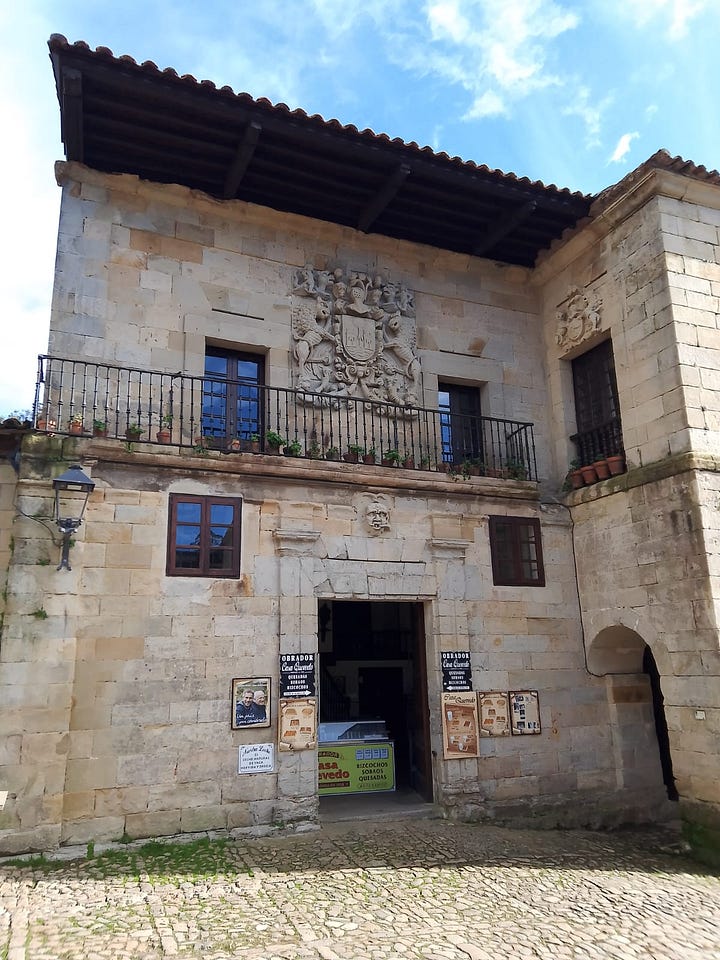
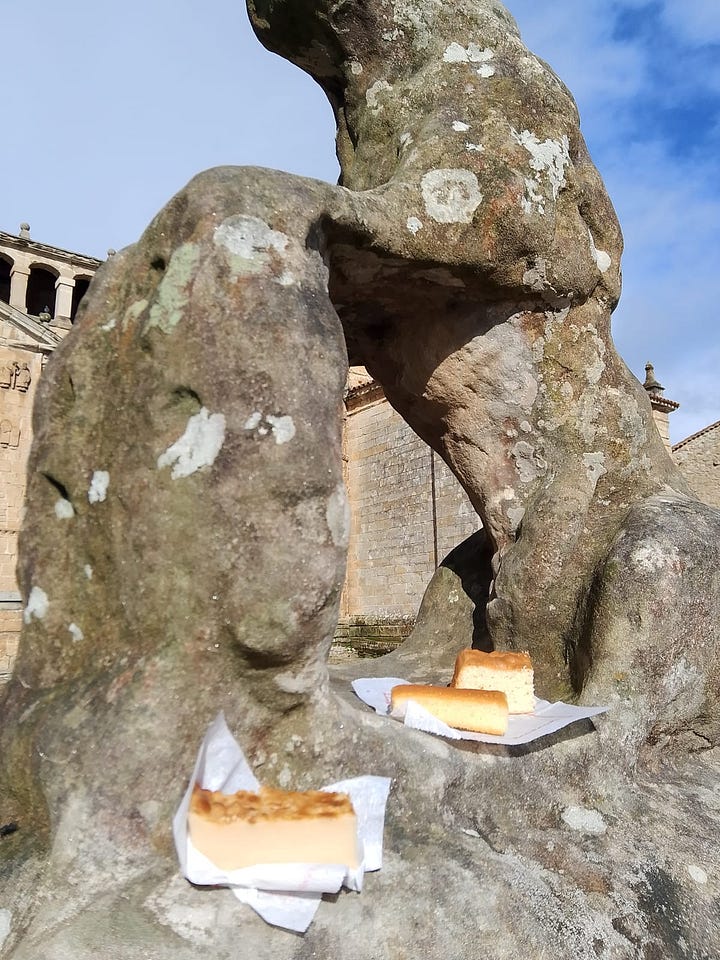
Our time in Cantabria was more than a stop along the way—it was a pause, a week where history, flavor, and landscape came together in perfect harmony. As March began, we carried with us the taste of San Sebastián’s seas, the sweetness of Santillana’s pastries, and the ancient echoes of Altamira’s painted walls—memories etched as vividly as the cave’s prehistoric art.
Two Months Across Spain and a Taste of Portugal
After our first few weeks in Spain, we made a decision: to explore this country as much as possible. What was meant to be a short adventure soon turned into two full months on Spanish soil, with a short four-day detour into Portugal. From the very first day, we fell in love with Spain—its warm hospitality, its vibrant culture, and its endless landscapes woven with history, traditions, and flavors.
Spain is a mosaic of 17 autonomous communities—Andalusia, Aragon, Asturias, the Balearic Islands, the Canary Islands, Cantabria, Castile-La Mancha, Castile and León, Catalonia, the Valencian Community, Extremadura, Galicia, La Rioja, the Community of Madrid, the Region of Murcia, Navarre, and the Basque Country. We were fortunate to visit many of them, beginning in the Basque Country, then continuing along the rugged northern coast.
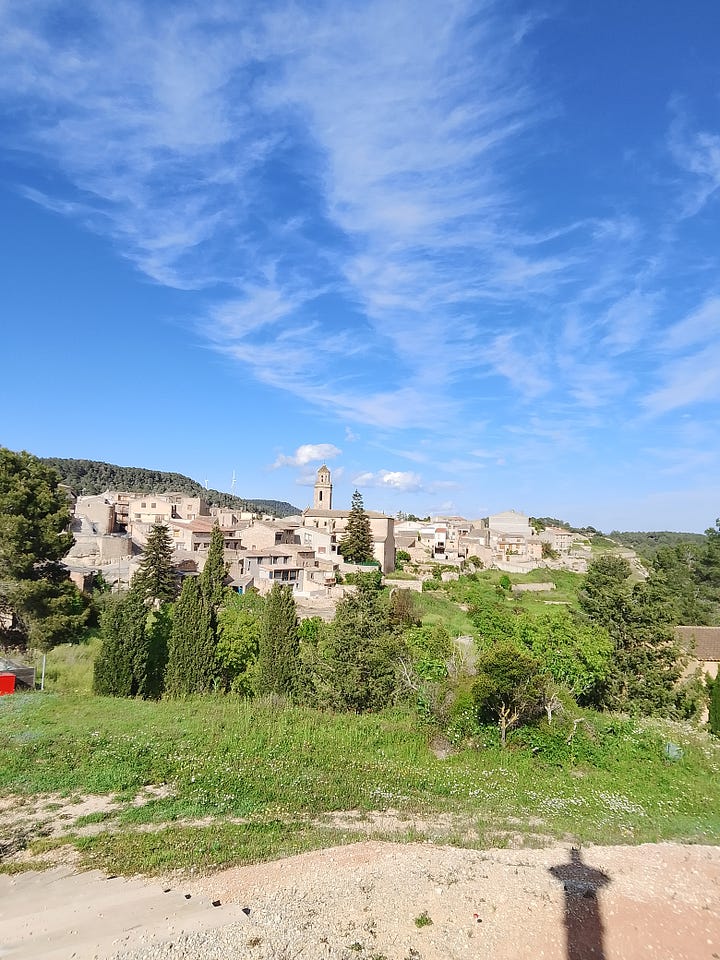
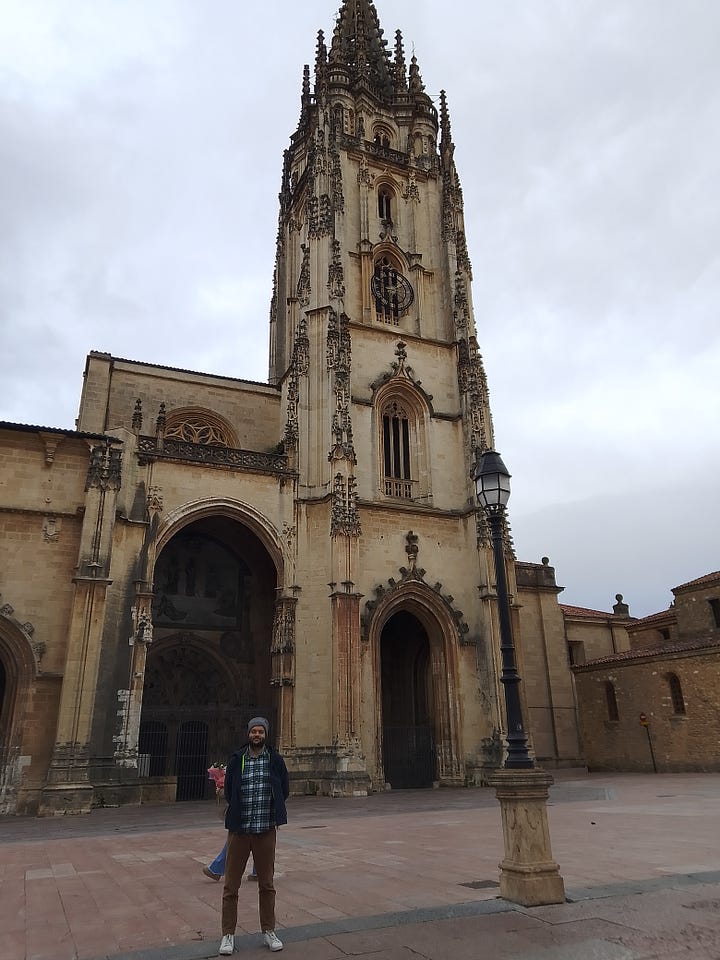
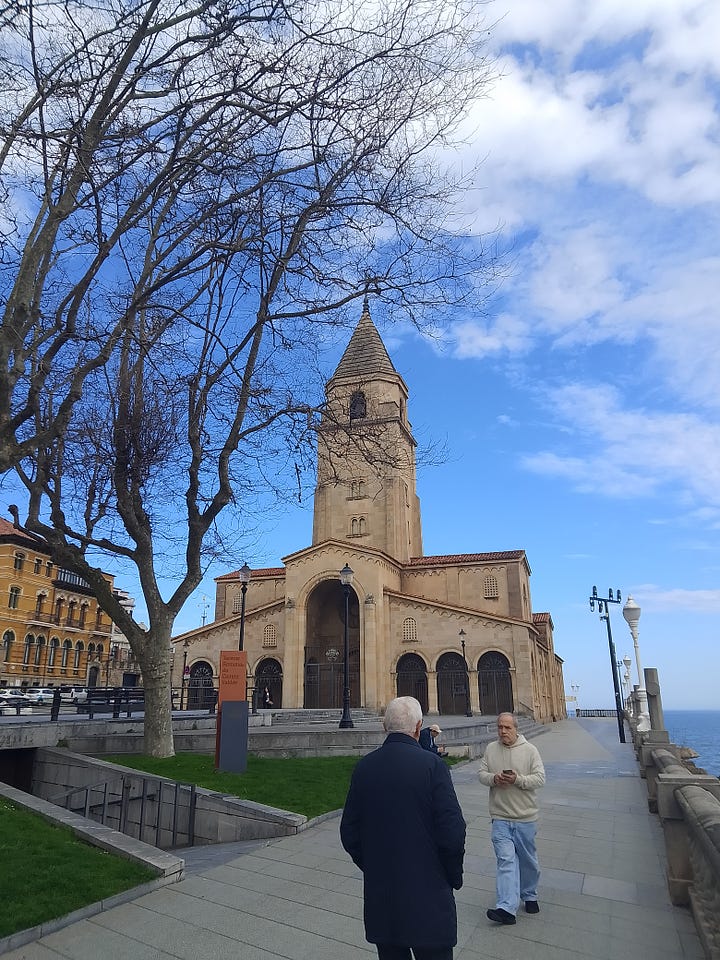

From Cantabria, we entered Asturias, spending two days in Oviedo and two in Gijón, before crossing into Galicia—a region that instantly stole our hearts. Its rolling hills, jagged coastline, and deep history felt like an embrace. We spent three weeks exploring, from the lighthouse route near A Coruña to hidden fishing villages. But one experience stood out above all: our time in Santiago de Compostela.
Santiago is the capital of Galicia and the final destination of the world-famous Camino de Santiago, a network of pilgrimage routes that converge at the city’s cathedral, where the relics of the Apostle Saint James are kept. The most well-known path, the Camino Francés, stretches roughly 800 kilometers across Spain. My parents walked it when I was 17, and I still remember how they returned changed—full of stories, with a newfound light in their eyes.
When I finally stood in Santiago’s grand square, facing the cathedral, I understood why. I attended the Pilgrim’s Mass, a profound moment of community and reflection shared by travelers from all over the world. One of the most awe-inspiring moments was witnessing the Botafumeiro, the cathedral’s massive incense burner. Suspended from the ceiling, it swings high above the congregation, filling the air with the fragrance of incense—a tradition that dates back centuries, originally intended to cleanse the air after the arrival of weary pilgrims.
And of course, in Galicia, food is never far from the heart of the experience. The region’s most famous dish, pulpo a la gallega (Galician-style octopus), is both humble and extraordinary. Preparing it requires patience—the octopus is gently simmered until perfectly tender, then cut into generous slices and dressed simply with sweet paprika, coarse salt, and a drizzle of olive oil. Picture yourself seated in a mesón pulpeira, the air filled with the rich aroma of freshly cooked octopus. On the side, a plate of pimientos de Padrón—small green peppers fried until blistered—adds a touch of heat, while a chilled glass of crisp Albariño wine completes the picture.
With 1,200 kilometers of coastline and Europe’s largest fishing port in Vigo, Galicia’s life and cuisine are tied to the sea. The nutrient-rich Atlantic waters provide lobster, scallops, crab, sardines, sea bass, and much more. Inland, the region’s fertile land offers peppers, potatoes, chestnuts, mushrooms, and some of Spain’s most beloved meats and cheeses.
Galicia is a place where the land and sea meet in perfect harmony, where every bite tells a story, and where traditions are as alive today as they were centuries ago.
After our time in Galicia, we crossed into Portugal for four days, but it didn’t take long to realize that we would need to return for a deeper, more meaningful experience. Back in Spain, we made our way through Ávila in Castile and León, then headed south into the wide, open plains of La Mancha—a vast agricultural land of olive groves, orange orchards, and the production of the famous Iberian ham. Sadly, we had to skip Andalusia; its size and richness deserved more time than we could give on this journey.
Traveling by campervan is not just romantic—it’s also about daily organization and maintenance: refilling water, cleaning, taking care of the vehicle, and doing the grocery shopping. Still, what’s certain is that we loved Spain from the very beginning. The people are warm, welcoming, and relaxed. Life runs at an unhurried pace—lunch is between 1:30 and 3:00 p.m., dinner never starts before 8:30—and each region has its own unique history, character, and even language. From the Basque Country to Galicia, the Valencian Community to Catalonia, every area proudly keeps its traditions alive.
By May, we had reached Valencia—our heart city. We had already visited two years ago for my birthday, but returning was the right choice. There’s something about Valencia—its uniqueness, its long seafront promenade, its atmosphere—that makes it unforgettable.
We enjoyed lunch in a traditional restaurant. While Spain is famous for tapas, my suggestion is to truly immerse yourself in the culture by seeking out local specialties. In Valencia, that means paella, prepared in many variations, each one a tribute to the region’s culinary heritage.


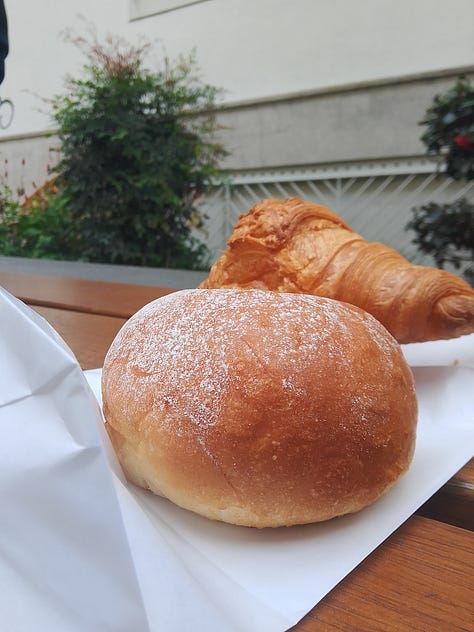
Catalonia and Return to Italy
Our journey continued into Catalonia, where we spent a week in small villages, discovering a side of the region far from the tourist routes. While Catalonia’s history often paints it as proud and stubborn, what we found were traditions, culture, and people eager to share their stories.
It reminded me how important it is not to judge a place until you’ve experienced it firsthand, breaking down the stereotypes we all sometimes carry.
By June, we returned to Italy because our camper needed a few small repairs. I embraced the chance to spend a month and a half in Tuscany, especially with my grandparents, Mario and Lorenzina. I listened to their stories about the recipes they made for me as a child, planted basil with my grandmother, and tried to absorb every bit of wisdom they had to share.
But the desire to travel never really fades. Still in the rhythm of exploration, we decided to set off again—this time toward England, with a very special destination in mind: Cornwall.
I’d like to pause for a moment and share a bit more about what this journey has meant to me on an emotional level. All my life, I’ve searched for security—a place to return to, where I could feel at home and safe. What I’ve learned, and am still processing, is that traveling is not just about covering miles and miles; it’s also about managing your own time, embracing the freedom this lifestyle gives you, and learning to navigate your emotions.
What I’ve come to understand—though everything is always evolving—is that my story is guiding me toward the possibility of one day telling the story of my grandparents and my Tuscan roots in a cookbook. This journey has helped me realize how fortunate I’ve been to grow up surrounded by people with a rich history, with a past full of wisdom. The journey has continued both outwardly and inwardly…
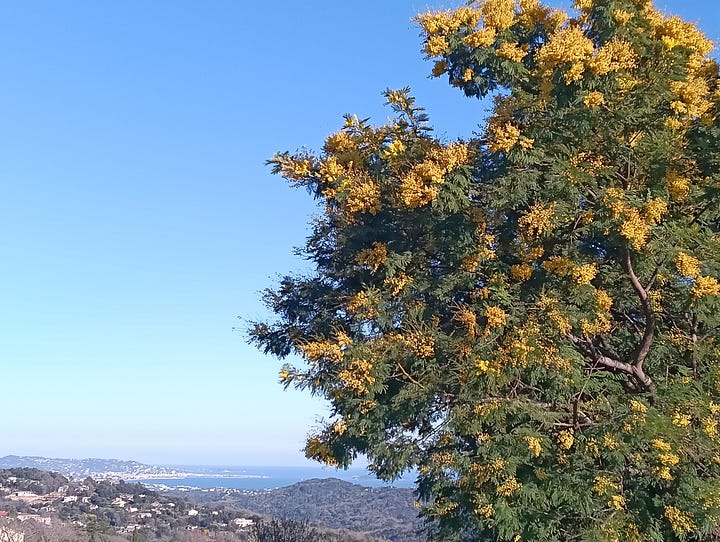
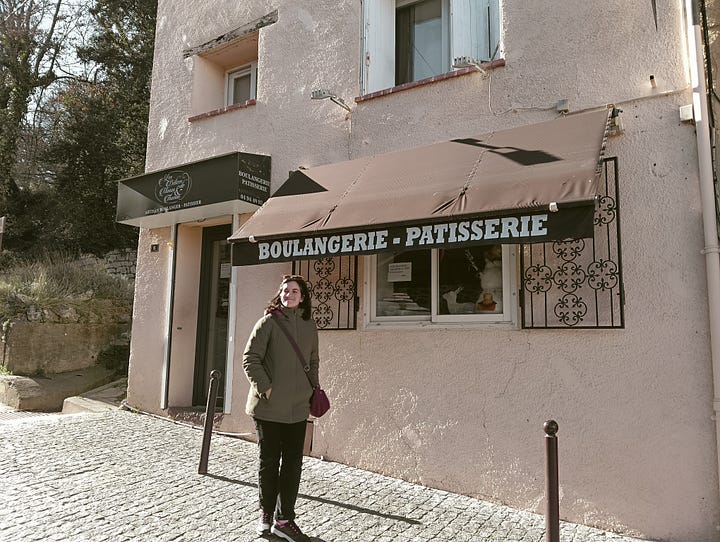
France, England, and the Road to Ireland
Returning to the miles traveled: in July, coming back through the Monginevro Pass in Piedmont, we arrived in Jausiers, and from there, over the course of 13 days, we crossed France, village after village—rolling hills, fields of sunflowers, cows grazing in meadows, and landscapes covered with vineyards. We even visited the region where Champagne is produced.
On July 12th, we reached Calais late in the evening, spending the night in a campervan parking area. The next morning, we boarded an Irish Ferries ship, and the excitement grew as we caught sight of the white cliffs of Dover.
The first challenge? Driving on the left—help! Thankfully, my partner Pietro adapted quickly, and after two days in Canterbury, we ventured deeper into southern England: Sussex, Dorset, and finally, the endless green of Cornwall.

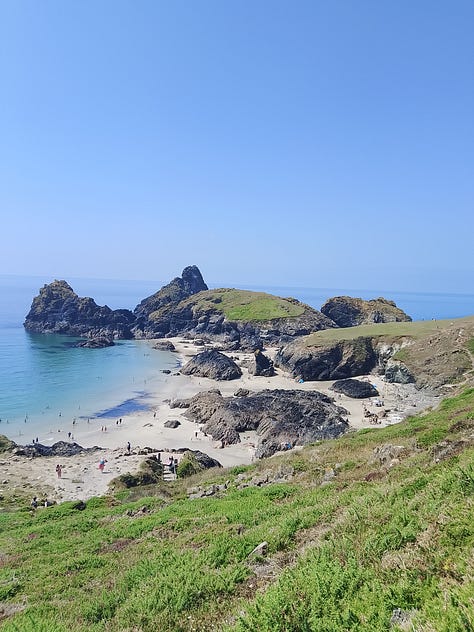
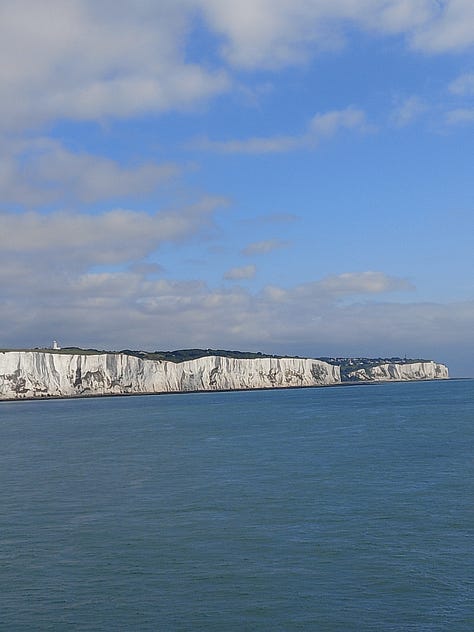
Imagine vivid colors—the deep blue of the ocean, the purple of heather flowers, the green of rolling hills, sunsets painted with intense light, and an atmosphere that seems to carry ancient Celtic stories in the wind.
But as you know, life is always full of surprises. You never really know where it will take you, and sometimes you have to make decisions that will drastically change your path. For us, that moment came while we were in Cornwall… life will soon take us to live in Ireland!
This doesn’t mean the travels will end—quite the opposite. There will be more journeys, more places, more cultures, more food, and a whole new “pub life” to discover. I can’t wait to share it all with you.
More about the author: About Christine
❤️ Did you know that if you hit the heart or recycle symbol at the top or bottom of this post, it makes it easier for other people to find this newsletter?




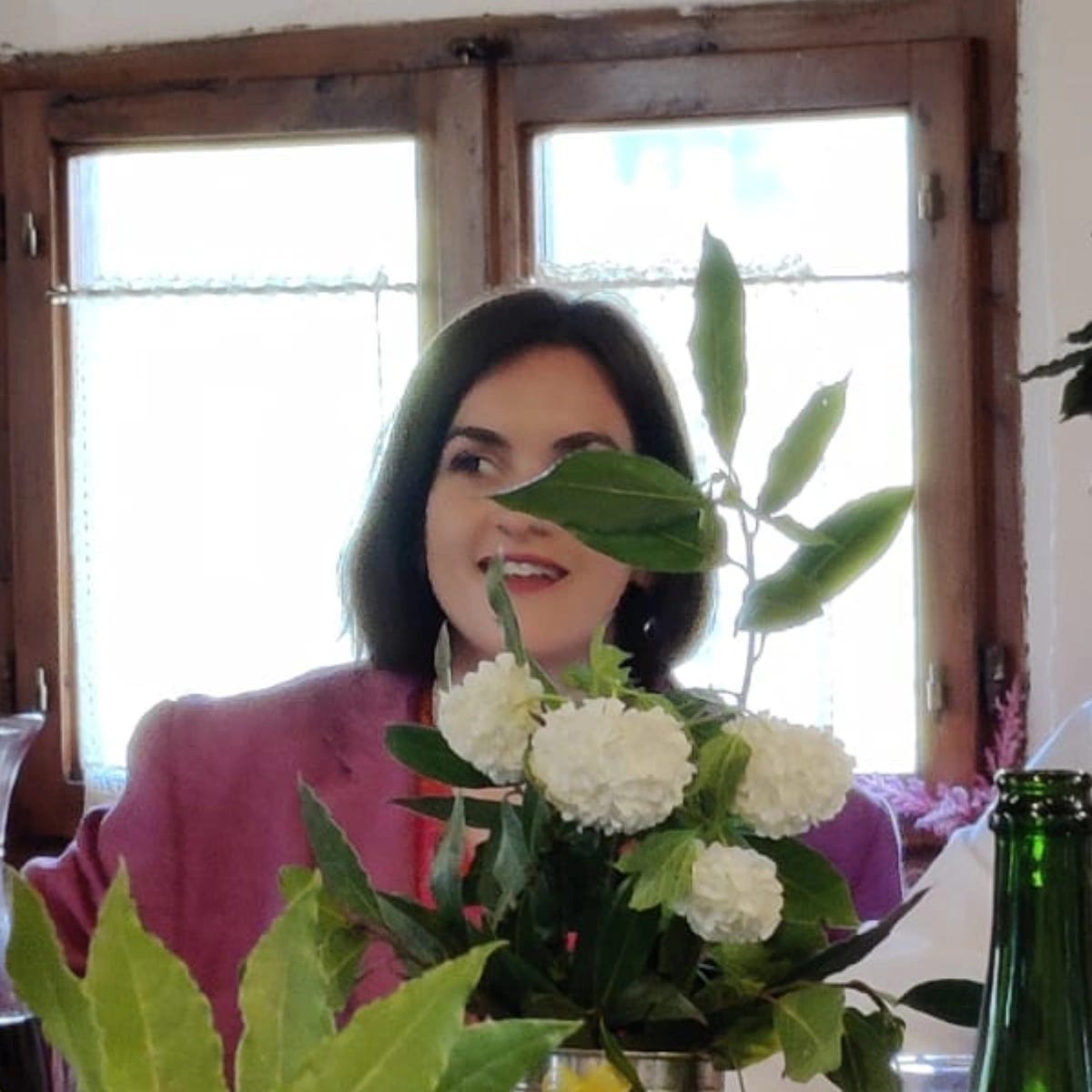
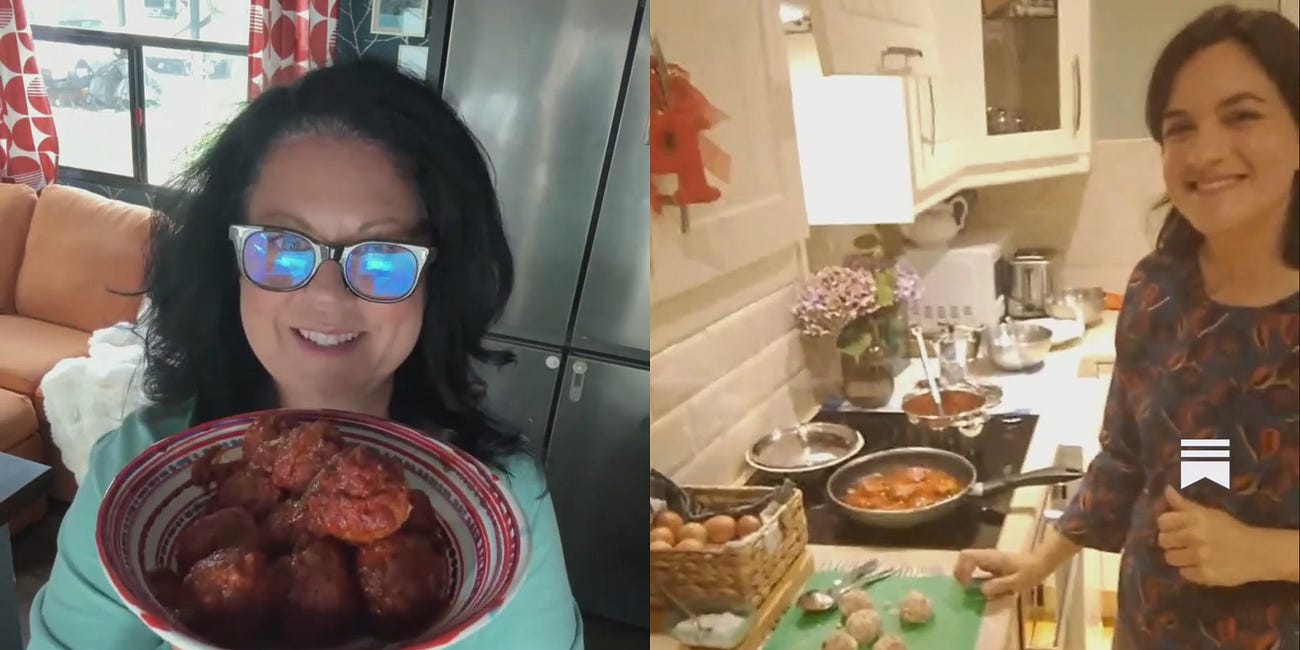
Love this- Christine was my very first person I met on substack- I enjoy her travels- recipes and joy of living!!!
my dreams are made of tuscan meatballs😋